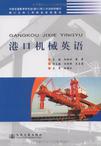港口机械专业英语
2009-3
人民交通出版社
仇桂玲,董丽 主编
129
200000
为适应港口建设和发展的需要,促进港口高技能人才的培养,2006年中国交通教育研究会(港口)职工分会教材编审委员会依据《交通行业职业技能标准》的要求,编写了《港口主体工种技师、高级技师培训教学计划及教学大纲》。 2007年,中国交通教育研究会(港口)职工分会教材编审委员会按照《港口主体工种技师、高级技师培训教学计划及教学大纲》的要求,组织编写了《港口内燃装卸机械检测》、《港口内燃装卸机械控制技术》、《港口电动装卸机械检测》、《港口电动装卸机械控制技术》、《港口装卸机械电气设备基础》、《港口装卸机械电气控制技术》、《港口机械英语》七册教材,并对2004年出版的《港口机械设备管理》一书作了修订。 本套教材从港口高技能人才培训的实际需要出发,除《港口机械英语》、《港口机械设备管理》为通用培训教材外,其余六册均采用了驾驶与修理合编,技师与高级技师合编的编写方法,并在教材后附有相关主体工种培训的教学计划和教学大纲。教材在编写过程中,参考了各港口有关教材及培训资料,注重理论知识与港口生产实际相结合,引入了新知识、新技术、新工艺。因此本套教材具有较高的针对性、通用性、实用性和先进性,适应了港口生产的发展变化,以求满足技术工人成长及港口主体工种技师、高级技师职业技能鉴定考核的需要。 由于港口主体工种所涉及机械、电气设备种类繁多,结构各异,在使用中,教学培训负责人和教师应按学员工种和级别的不同,以及各港使用和维修设备的不同,在给定课时范围内,有针对性地选择书中有关章节进行讲授。 本书是港航机械专业的英语阅读教材,共分为5章,精选了港航机械专业方面的文章62篇,主要内容包括:机械原理,港口电气设备,港口机械设备简介,港口机械设备维护以及港口机械设备规格等。可供港口机械设备管理及相关人员参考使用。 本书由青岛港湾职业技术学校仇桂玲、董丽任主编,刘洪新、王宝昌任副主编。具体编写分工为:董丽(第一、二章),仇桂玲(第三章),刘洪新(第四章),王宝昌(第五章)。全书由秦皇岛港教育培训中心杨丽红主审。 另外,本套教材在编写过程中,得到了秦皇岛港、上海港、广州港、天津港、大连港、宁波港、青岛港湾职业技术学院、湛江港、南京港有关部门领导及专家们的热情支持与帮助,原中国交通教育研究会(港口)职工分会理事长林洁敏同志、副理事长王棣海同志在任职期间,原中国交通教育研究会(港口)职工分会秘书长杨振翔同志及现任秘书冯丽同志都对本套教材的编写进行了积极有效的工作,在此一并表示感谢。 由于编者能力和时间所限,教材中存在的问题和缺陷在所难免,敬请各位专家和读者批评指正。
本书是港口机械专业英语阅读教材,共分为5章,精选了港口机械专业方面的文章62篇,主要内容包括:机械原理,港口电气设备,港口机械设备简介,港口机械设备维护以及港口机械设备规格等。 本书可供港口机械设备管理及相关专业人员参考使用。
Chapter 1 Mechanical Principle Lesson 1 Steel Lesson 2 Heat Treatment of Metals Lesson 3 Introduction to Bearings Lesson 4 Introduction to Gears Lesson 5 Introduction to Cams Lesson 6 Introduction to Springs Lesson 7 Dimensions and Tolerances Lesson 8 Properties of Materials Lesson 9 ICE Lesson 10 Principle of Four Stroke Gasoline Engine Lesson 11 Brief introduction to the Common ChassisChapter 2 Introduction to Port Electric Components Lesson 12 General Knowledge of Electric & Electron Engineering Lesson 13 Battery and Generator Lesson 14 Lighting, Signal, Instrument and other Electrical Devices Lesson 15 EFI, ABS and ASR Lesson 16 Electric Motor Lesson 17 Programmable Logic Controller Lesson 18 Relay Lesson 19 Low-vohage Switch Lesson 20 Master Switch Lesson 21 Frequency Converter Lesson 22 Contactor and Fuse Lesson 23 TransformersChapter 3 A Brief Introduction to Port Machineries Lesson 24 Fork Lift Truck Lesson 25 Loader Lesson 26 Tractor and Trailer Lesson 27 Belt conveyor Lesson 28 Pneumatic Conveyor Lesson 29 Quayside Container Crane Lesson 30 Gantry Crane Lesson 31 RMG and RTG Lesson 32 Shiploader Lesson 33 Ship Unloader Lesson 34 Stacker and Reclaimer Lesson 35 Container HandlersChapter 4 Port Machinery Maintenance Lesson 36 Engine Maintenance Ⅰ Lesson 37 Engine Maintenance Ⅱ Lesson 38 Engine Maintenance Ⅲ Lesson 39 Chassis Maintenance Ⅰ Lesson 40 Chassis Maintenance Ⅱ Lesson 41 Crane Maintenance Ⅰ Lesson 42 Crane Maintenance Ⅱ Lesson 43 Crane Maintenance Ⅲ Lesson 44 Forklift Truck Operation & Safety Lesson 45 Hydraulic System Troubleshooting Lesson 46 Electrical System Troubleshooting Lesson 47 Particular Precaution for Operation and MaintenanceChapter 5 Specifications Lesson 48 Profile of Product Lattice Boom Crawler Crane CC2500-1 Lesson 49 Shiploader Manual Lesson 50 Reclaimer Manual Lesson 51 JPC Series High Voltage Cable Reel Instruction Lesson 52 ZPMC coupling introduce Lesson 53 Operation Manual for RAM Auto-Latching Telescopic Overheight Spreader Lesson 54 ELME Container Spreader Lesson 55 Electrical System of loader Lesson 56 Industrial Relays (SH series Standard type) Lesson 57 Earth Leakage Circuit Breakers Lesson 58 Transducers Lesson 59 Power Factor Controllers Lesson 60 Noise Suppression Filters Lesson 61 Power Fuse application Lesson 62 Instrument Transformers
Generally speaking, there are two kinds of steels in common use : plain carbon steels and alloy steels. Firstly, lets look at plain carbon steels. Plain carbon steels are the steels that contain only carbon and no other major alloying elements. This kind of steel has 3 types which are low-carbon steel, medium-carbon steel ~/nd high-carbon steel. They get their special names from their content of carbon. If the carbon content is lower than 0.25%, it is called low-carbon steel. It cannot be hardened but can be case-hardened. It has these characteristics which are easy machining & forming, comparatively less strength, least expensive, comparatively less hardness and largest quantity produced. In practice use, bolts, nuts, washers, sheet steel, and shafts use low-carbon steel. Medium-carbon steel contains from 0.25-0.60 percent carbons. This kind of steel is mostly used in situation where greater tensile strength is required. This kind of steel may be hardened for it has higher carbon content. Its characteristics are as follows, hard & strong after heat treating; medium depth of hardness and more expensive than low carbon steel. Tools such as wrenches, hammers, and screwdrivers are drop-forged from medium-carbon steel and later heat treated. High-carbon steel ( also named as tool steel) contains over 0.60 percent carbon, and it can contain as high as 1.7 percent. It has these characteristics : hard & strong after heat treating; depth of hardness increases and more expensive than low & medium carbon steels. Cutting tools, punches, taps, dies, drills and reamers usually use this kind of steel. Then is the alloy steels. Alloy steel is the steel whose characteristics are determined by the addition of other elements in addition to carbon. Alloy steels have some special characteristics which are not found in plain carbon steels, so alloy steels are widely used in practice. That is to say, sometime we prefer alloy steel to plain steel. Alloy steel has these following characteristics: it increases in tensile strength, hardness, toughness, antiwear property, corrosion resistance and red-hardness.
《港口机械英语》由青岛港湾职业技术学校仇桂玲、董丽任主编,刘洪新、王宝昌任副主编。具体编写分工为:董丽(第一、二章),仇桂玲(第三章),刘洪新(第四章),王宝昌(第五章)。全书由秦皇岛港教育培训中心杨丽红主审。
